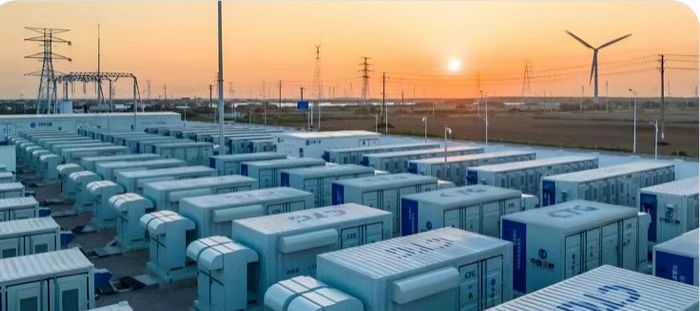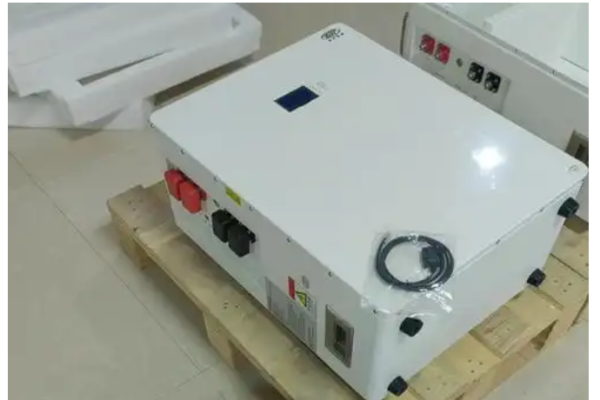As solar energy systems evolve, more homeowners, businesses, and EPCs are pairing solar panels with lithium batteries to build hybrid or off-grid solutions.
While this combination can deliver energy independence, peak-shaving, and backup power, mismatching components can cause efficiency loss, inverter errors, or even battery damage.
This guide explains how to properly pair PV modules and lithium batteries, what parameters to watch, and the common traps installers and buyers should avoid.
1. Why Pairing Matters
Solar + Battery systems rely on smooth energy flow between:
- PV array → charge controller / inverter → lithium battery → load or grid
If voltage, current, or capacity are mismatched, problems occur:
- PV power not fully utilized
- Batteries undercharged or overcharged
- Inverter shutdowns during peak sunlight
- Reduced battery lifespan
⚙️ Proper pairing ensures safe charging, maximum energy harvest, and long-term stability.
2. Key Electrical Parameters to Match
| Parameter | Description | Typical Range | Impact |
|---|---|---|---|
| PV Array Voltage (Vmp / Voc) | Voltage from panels under load / open circuit | 120–600V (depends on inverter) | Must fall within inverter PV input limits |
| Battery Voltage (Nominal) | System DC bus voltage | 12V / 24V / 48V / 51.2V | Must match inverter battery range |
| Charge Current (A) | Charging current into battery | 20–200A | Too high → heat & stress |
| Capacity (kWh) | Energy storage size | 5–500kWh | Affects autonomy & inverter runtime |
🔋 For hybrid systems, always verify inverter PV input voltage range and supported battery voltage (e.g., 48V nominal, 40–60V operating).
3. Understanding System Topologies
🟢 A. Off-Grid Solar + Battery System
- PV → MPPT charge controller → battery → inverter → load
- Common for remote areas or telecom towers
- Requires exact voltage match between controller and battery
🟡 B. Hybrid Grid-Tied System
- PV + grid + battery → hybrid inverter → load
- Most modern systems
- Smart BMS communication is essential (CAN/RS485)
🔵 C. DC-Coupled vs. AC-Coupled
- DC-coupled: PV and battery share same DC bus → higher efficiency
- AC-coupled: Separate PV inverter and battery inverter → flexible retrofit
⚡ For residential ESS, DC-coupled hybrid inverters with 48V or 51.2V lithium batteries are the most popular choice.
4. Matching Battery Voltage with PV Input
Your inverter or charge controller acts as the bridge between PV and battery.
Example:
- 48V battery system
- PV array voltage 300V (Vmp)
- Inverter PV input: 120–500V DC
✅ Works perfectly — MPPT converts PV voltage down to match battery charging voltage.
❌ Common mistake: Connecting PV strings too low or too high in voltage.
- Too low → inverter won’t start MPPT tracking
- Too high → risk of DC bus overvoltage or damage
💡 Always calculate PV string voltage based on panel Voc × number of panels × temperature coefficient.
5. Correct Sizing: PV-to-Battery Ratio
A balanced ratio ensures the battery charges efficiently without overloading the inverter.
| Application | Recommended PV : Battery (kWp : kWh) | Example |
|---|---|---|
| Home backup | 1 : 1 | 5kWp PV + 5kWh battery |
| Daily cycling | 1.2 : 1 | 6kWp PV + 5kWh battery |
| Off-grid | 2 : 1 | 10kWp PV + 5kWh battery |
| C&I system | 1 : 1.5 | 100kWp PV + 150kWh battery |
⚙️ For off-grid, oversize the PV array to ensure full charging on cloudy days.
6. Choosing Compatible Inverters
When pairing lithium batteries with solar, the inverter is the core coordinator.
Check these inverter parameters:
- Battery nominal voltage (e.g., 48V / 51.2V)
- Supported BMS communication (CAN, RS485, or Modbus)
- PV voltage input range (Vmp/Voc)
- Max charge/discharge current
- MPPT tracking number (affects efficiency under shading)
⚡ Pairing a “dumb inverter” with a smart lithium battery can cause SOC errors and early cutoff.
7. BMS Communication and Compatibility
Modern lithium batteries use Battery Management Systems (BMS) to:
- Prevent overcharge / over-discharge
- Communicate SOC (State of Charge)
- Manage balancing and temperature
Common inverter brands support direct communication with BMS via CAN or RS485:
✅ Growatt, Deye, Luxpower, Sofar, GoodWe, Victron, etc.
🔌 Always confirm protocol compatibility (e.g., Pylontech, BYD, or custom BMS).
Without proper communication, inverter may:
- Stop charging too early
- Misread SOC → reduced usable capacity
- Trigger fault codes
8. Battery Chemistry: Why LiFePO₄ is Preferred
Among lithium types, LFP (LiFePO₄) batteries are best for PV storage because:
- Wide operating voltage range (40–58V)
- High cycle life (6000+ cycles)
- Thermal stability and safety
- Compatible with most hybrid inverters
Other chemistries (NMC, LCO) may have higher energy density but require stricter BMS control.
🔋 51.2V LFP is the de facto standard for residential ESS today.
9. Common Mistakes (Traps) to Avoid
| Mistake | Consequence | Prevention |
|---|---|---|
| ❌ Wrong PV string voltage | Inverter startup failure | Check MPPT voltage range |
| ❌ No BMS communication | Inaccurate SOC / protection failure | Use compatible inverter protocol |
| ❌ Oversized PV array | Battery overheating | Follow PV:kWh ratio guidelines |
| ❌ Poor grounding | EMI and safety risks | Proper earthing and surge protection |
| ❌ Mixing old & new batteries | Imbalance and short life | Always use same batch/capacity |
| ❌ Thin DC cables | Voltage drop, heating | Use proper cable gauge for current |
10. Installation Tips for Reliable Pairing
- Use MC4 connectors rated for full PV current
- Check polarity before connecting batteries
- Pre-charge inverter DC bus (avoid spark)
- Install DC breakers and fuses between PV, battery, and inverter
- Label all cables for easy maintenance
- Keep battery temperature within 15–30°C
- Record system parameters for after-sales diagnostics
🧰 A small installation mistake can cause large efficiency loss over time.
11. Real-World Example
System: 10kWp PV + 20kWh LFP battery + 10kW hybrid inverter
Location: Southeast Asia
| Component | Model | Key Spec |
|---|---|---|
| PV Panels | 550W mono × 18 pcs | 9.9kWp total |
| Battery | 51.2V 280Ah × 2 units | 28.6kWh |
| Inverter | 10kW hybrid | PV input 550V, battery 48–58V |
✅ Daily charge completed by 2 PM; 100% battery usable; 5% PV loss
Result: Stable operation and full communication via CAN.
12. Future Trends
- Smart pairing software: AI-based PV-battery optimization
- High-voltage lithium packs: 100–700V battery banks for large ESS
- Modular hybrid kits: pre-integrated inverter + battery + PV input
- Dynamic load management: smart energy routing to maximize solar usage
🌞 The future of PV+Storage is intelligent, modular, and communication-driven.
Pairing solar panels with lithium batteries is no longer a simple plug-and-play task — it’s an engineering decision.
The right pairing ensures maximum yield, safe operation, and long battery life.
✅ Key Takeaways:
- Match inverter PV and battery voltage ranges.
- Use compatible BMS communication (CAN/RS485).
- Maintain a balanced PV-to-battery ratio.
- Avoid common wiring and grounding mistakes.
With proper design and component matching, your PV+ESS system can deliver reliable, efficient power for years — whether for homes, businesses, or off-grid projects.









